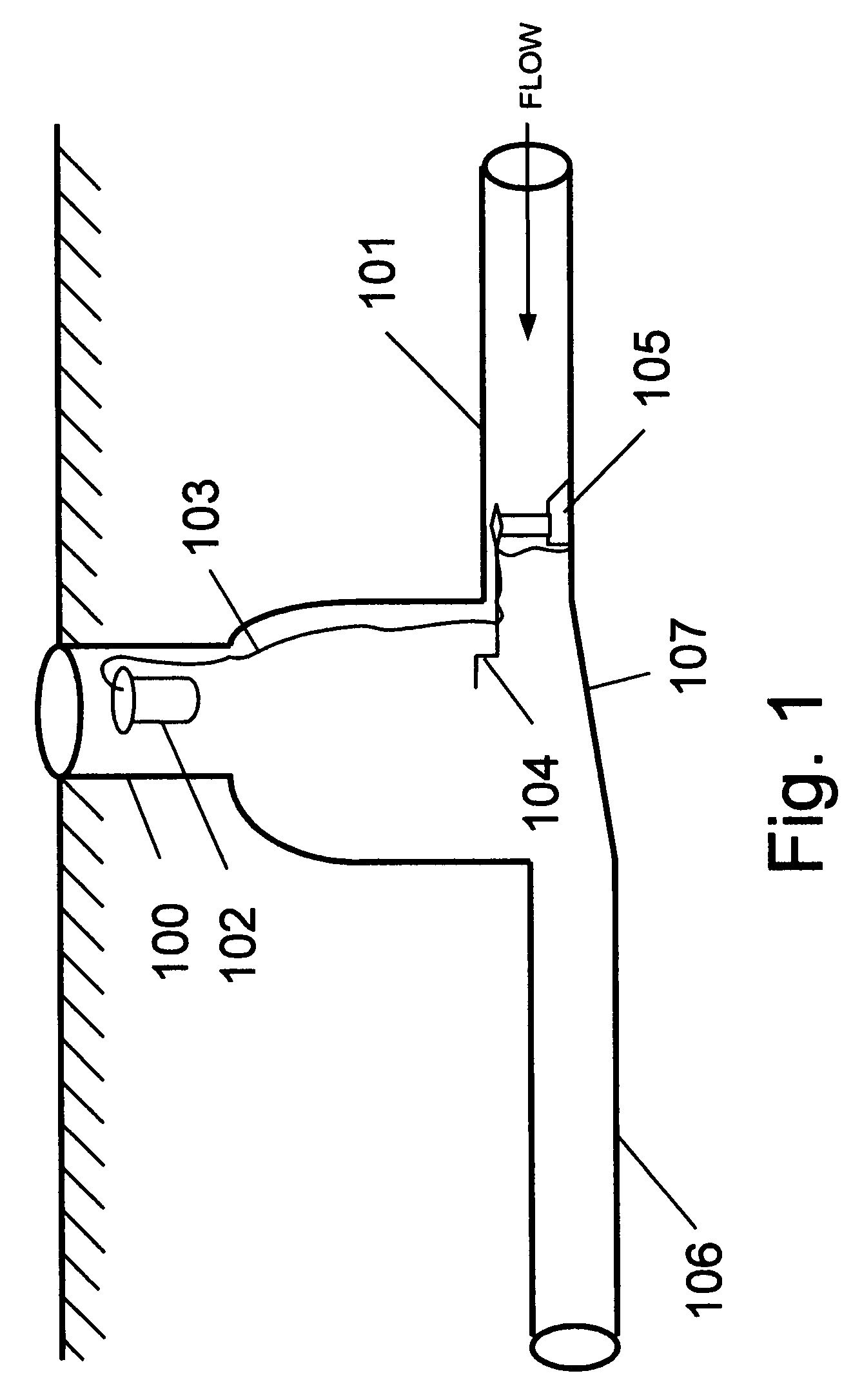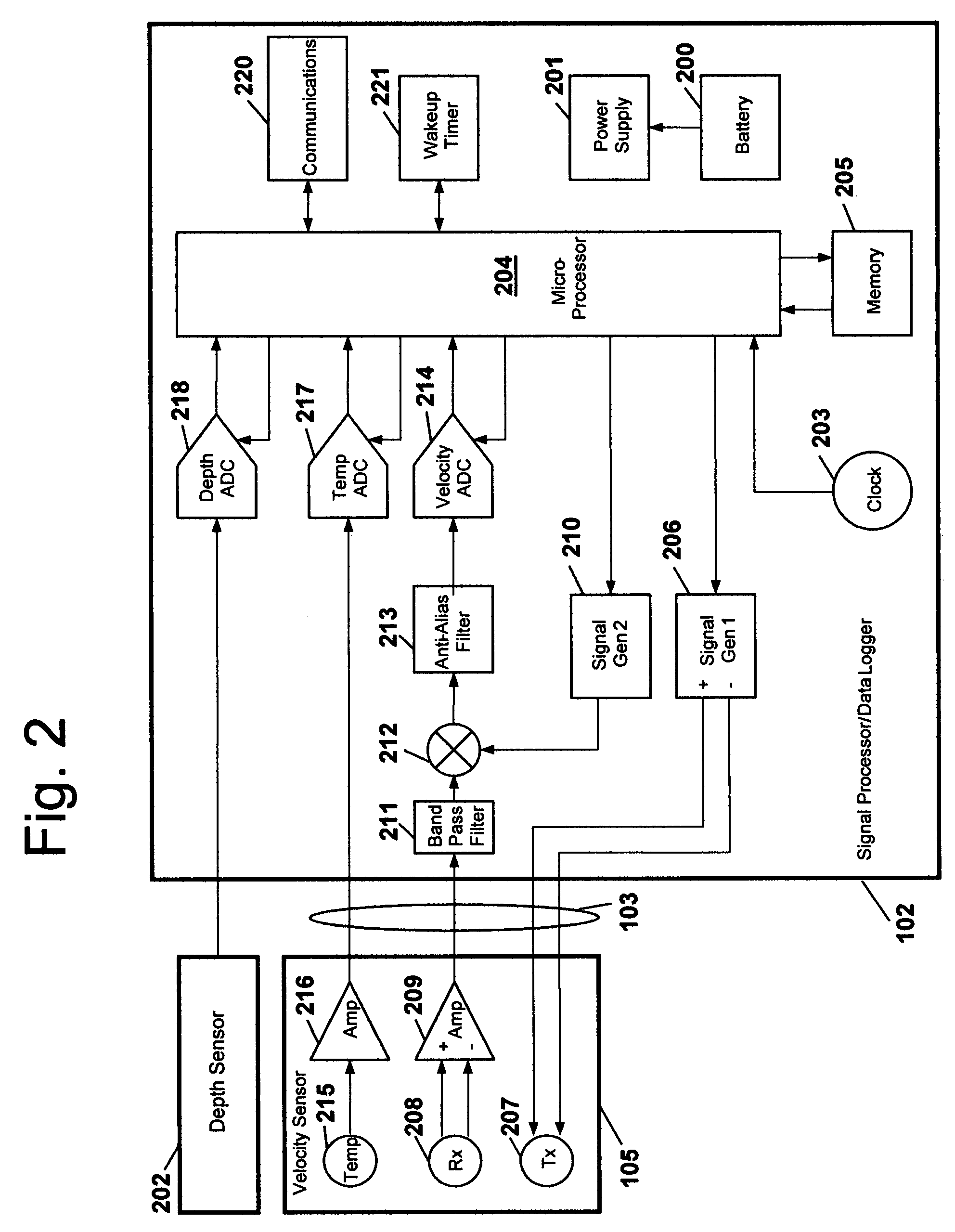Flow measurement in partially filled pipes using pulsed peak velocity doppler
a technology of flow velocity and doppler, which is applied in the direction of fluid pressure measurement by mechanical elements, volume flow measurement devices, special data processing applications, etc., can solve the problems of system difficulty, inability to accurately measure the average velocity, and inability to screen the distance of particles by closer particles, etc., to achieve accurate and economic measurement of flow velocity
- Summary
- Abstract
- Description
- Claims
- Application Information
AI Technical Summary
Benefits of technology
Problems solved by technology
Method used
Image
Examples
Embodiment Construction
[0032]Turning, now, specifically to FIG. 1, a transmitting and receiving ultrasonic sensor 105 is mounted on an expandable scissors jack mounting ring 104 and is installed in the influent pipe 101 of manhole 100. The scissors jack mounting, as described in Petroff U.S. Pat. No. 4,116,061, is ideal for installation in smaller diameter pipes. U.S. Pat. No. 4,116,061, titled “Sewer Line Analyzer Probe,” issued Sep. 26, 1978 to Petroff is hereby incorporated herein by reference. In the arrangement of FIG. 1, the sensor is preferably positioned at the bottom of the pipe such that it is “looking” up stream. If silt, rock or other debris is present, then the sensor and ring can be installed such that the ring is in contact with the pipe wall (and beneath the debris) but the sensor is located above the debris on the side of the pipe. In all cases, the sensor should be installed below the surface of the water, or in the case of a normally dry pipe, at a point in the pipe where the flow is ex...
PUM
 Login to View More
Login to View More Abstract
Description
Claims
Application Information
 Login to View More
Login to View More - R&D
- Intellectual Property
- Life Sciences
- Materials
- Tech Scout
- Unparalleled Data Quality
- Higher Quality Content
- 60% Fewer Hallucinations
Browse by: Latest US Patents, China's latest patents, Technical Efficacy Thesaurus, Application Domain, Technology Topic, Popular Technical Reports.
© 2025 PatSnap. All rights reserved.Legal|Privacy policy|Modern Slavery Act Transparency Statement|Sitemap|About US| Contact US: help@patsnap.com



